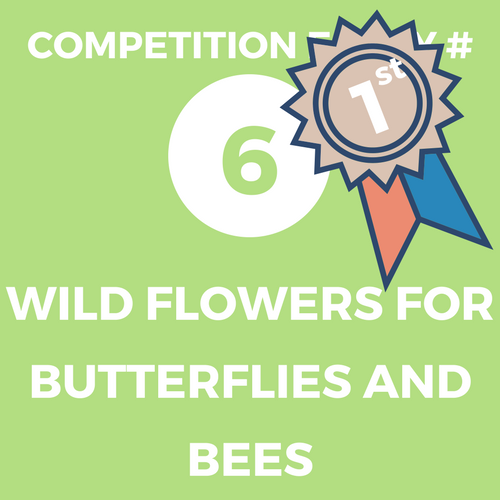Deprecated: Methods with the same name as their class will not be constructors in a future version of PHP; plgContentJw_allvideos has a deprecated constructor in /home/html/yeenet.eu/public_html/www/archives/plugins/content/jw_allvideos/jw_allvideos.php on line 18
Deprecated: implode(): Passing glue string after array is deprecated. Swap the parameters in /home/html/yeenet.eu/public_html/www/archives/plugins/content/jw_allvideos/jw_allvideos.php on line 72
Deprecated: implode(): Passing glue string after array is deprecated. Swap the parameters in /home/html/yeenet.eu/public_html/www/archives/plugins/content/jw_allvideos/jw_allvideos.php on line 72
Deprecated: implode(): Passing glue string after array is deprecated. Swap the parameters in /home/html/yeenet.eu/public_html/www/archives/plugins/content/jw_allvideos/jw_allvideos.php on line 72
Deprecated: implode(): Passing glue string after array is deprecated. Swap the parameters in /home/html/yeenet.eu/public_html/www/archives/plugins/content/jw_allvideos/jw_allvideos.php on line 72
Deprecated: implode(): Passing glue string after array is deprecated. Swap the parameters in /home/html/yeenet.eu/public_html/www/archives/plugins/content/jw_allvideos/jw_allvideos.php on line 72
Deprecated: implode(): Passing glue string after array is deprecated. Swap the parameters in /home/html/yeenet.eu/public_html/www/archives/plugins/content/jw_allvideos/jw_allvideos.php on line 72
Deprecated: implode(): Passing glue string after array is deprecated. Swap the parameters in /home/html/yeenet.eu/public_html/www/archives/plugins/content/jw_allvideos/jw_allvideos.php on line 72
Deprecated: implode(): Passing glue string after array is deprecated. Swap the parameters in /home/html/yeenet.eu/public_html/www/archives/plugins/content/jw_allvideos/jw_allvideos.php on line 72
Deprecated: implode(): Passing glue string after array is deprecated. Swap the parameters in /home/html/yeenet.eu/public_html/www/archives/plugins/content/jw_allvideos/jw_allvideos.php on line 72
Deprecated: implode(): Passing glue string after array is deprecated. Swap the parameters in /home/html/yeenet.eu/public_html/www/archives/plugins/content/jw_allvideos/jw_allvideos.php on line 72
Deprecated: implode(): Passing glue string after array is deprecated. Swap the parameters in /home/html/yeenet.eu/public_html/www/archives/plugins/content/jw_allvideos/jw_allvideos.php on line 72
Deprecated: implode(): Passing glue string after array is deprecated. Swap the parameters in /home/html/yeenet.eu/public_html/www/archives/plugins/content/jw_allvideos/jw_allvideos.php on line 72
Deprecated: implode(): Passing glue string after array is deprecated. Swap the parameters in /home/html/yeenet.eu/public_html/www/archives/plugins/content/jw_allvideos/jw_allvideos.php on line 72
Deprecated: implode(): Passing glue string after array is deprecated. Swap the parameters in /home/html/yeenet.eu/public_html/www/archives/plugins/content/jw_allvideos/jw_allvideos.php on line 72
Deprecated: implode(): Passing glue string after array is deprecated. Swap the parameters in /home/html/yeenet.eu/public_html/www/archives/plugins/content/jw_allvideos/jw_allvideos.php on line 72
Deprecated: implode(): Passing glue string after array is deprecated. Swap the parameters in /home/html/yeenet.eu/public_html/www/archives/plugins/content/jw_allvideos/jw_allvideos.php on line 72
Deprecated: implode(): Passing glue string after array is deprecated. Swap the parameters in /home/html/yeenet.eu/public_html/www/archives/plugins/content/jw_allvideos/jw_allvideos.php on line 72
Deprecated: implode(): Passing glue string after array is deprecated. Swap the parameters in /home/html/yeenet.eu/public_html/www/archives/plugins/content/jw_allvideos/jw_allvideos.php on line 72
Deprecated: implode(): Passing glue string after array is deprecated. Swap the parameters in /home/html/yeenet.eu/public_html/www/archives/plugins/content/jw_allvideos/jw_allvideos.php on line 72
Deprecated: implode(): Passing glue string after array is deprecated. Swap the parameters in /home/html/yeenet.eu/public_html/www/archives/plugins/content/jw_allvideos/jw_allvideos.php on line 72
Deprecated: Array and string offset access syntax with curly braces is deprecated in /home/html/yeenet.eu/public_html/www/archives/libraries/idna_convert/idna_convert.class.php on line 421
Deprecated: Array and string offset access syntax with curly braces is deprecated in /home/html/yeenet.eu/public_html/www/archives/libraries/idna_convert/idna_convert.class.php on line 435
Deprecated: Array and string offset access syntax with curly braces is deprecated in /home/html/yeenet.eu/public_html/www/archives/libraries/idna_convert/idna_convert.class.php on line 826
Deprecated: Array and string offset access syntax with curly braces is deprecated in /home/html/yeenet.eu/public_html/www/archives/libraries/idna_convert/idna_convert.class.php on line 957
Deprecated: implode(): Passing glue string after array is deprecated. Swap the parameters in /home/html/yeenet.eu/public_html/www/archives/plugins/content/jw_allvideos/jw_allvideos.php on line 72
Deprecated: implode(): Passing glue string after array is deprecated. Swap the parameters in /home/html/yeenet.eu/public_html/www/archives/plugins/content/jw_allvideos/jw_allvideos.php on line 72
Deprecated: implode(): Passing glue string after array is deprecated. Swap the parameters in /home/html/yeenet.eu/public_html/www/archives/plugins/content/jw_allvideos/jw_allvideos.php on line 72
Deprecated: implode(): Passing glue string after array is deprecated. Swap the parameters in /home/html/yeenet.eu/public_html/www/archives/plugins/content/jw_allvideos/jw_allvideos.php on line 72
Deprecated: implode(): Passing glue string after array is deprecated. Swap the parameters in /home/html/yeenet.eu/public_html/www/archives/plugins/content/jw_allvideos/jw_allvideos.php on line 72
Deprecated: implode(): Passing glue string after array is deprecated. Swap the parameters in /home/html/yeenet.eu/public_html/www/archives/plugins/content/jw_allvideos/jw_allvideos.php on line 72
Deprecated: implode(): Passing glue string after array is deprecated. Swap the parameters in /home/html/yeenet.eu/public_html/www/archives/plugins/content/jw_allvideos/jw_allvideos.php on line 72
Deprecated: implode(): Passing glue string after array is deprecated. Swap the parameters in /home/html/yeenet.eu/public_html/www/archives/plugins/content/jw_allvideos/jw_allvideos.php on line 72
Deprecated: implode(): Passing glue string after array is deprecated. Swap the parameters in /home/html/yeenet.eu/public_html/www/archives/plugins/content/jw_allvideos/jw_allvideos.php on line 72
Volunteers in YEE
Invitation
Invitation to the Annual Meeting 2018
Welcome Pack for Annual Meeting
Call for Board Members 2018-2019
Official documents
Agenda of the Annual Meeting 2018
Report - Review of Membership 2018
Report of organisations applying for membership
MOS fees rate change (to be voted)
Board Reports
Report Project Officer 2017-2018
Report Member Organisations Officer 2017-2018
Report Publications and Promotion Officer 2017-2018
Report External Relations Officer 2017-2018

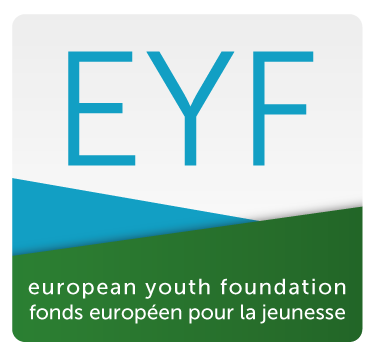
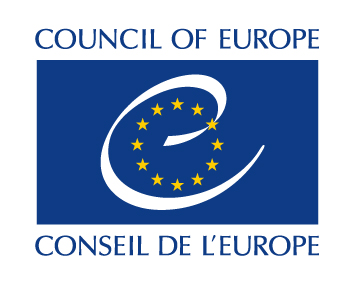

As part of the project "Environmental challenge accepted" BALTA DABA and partners created the series of 5 videos with the aim to share some experience with youth organisations. In the following videos you can find out more about: identifying the problem, setting goals, selecting stakeholders, measuring and presenting results.
PROBLEM IDENTIFICATION
SETTING GOALS
SELECTING STAKEHOLDERS
MEASURING RESULTS
PRESENTING RESULTS

7ARTE (Kosovo)
- Berna Xhemajli (group leader), Kristina Zimaj, Eglantina Avdiu, Feriz Kadriu, Rinor Kurshumliu
What: Upcycling workshop
When: 23 July 2017
Where: Mitrovica, Kosovo
Description of action: The action took place at the artificial lake in Mitrovica, where people go for entertaining activities. The idea was to have a cleaning action in the beginning, since the place is full of garbage left there by the poplation. The cleaning action started from the centre of the city to the artificial lake (more than 1 hour walking) starting from 10:00 to 12:30. After the cleaning action, there was an introduction of the workshop idea, therefore to use the garbage and make creative artwork with an environmental message on it. Also, each of the people who joined the workshop were introduced and then divided into 5 groups and completed their artwork. In general, the participants really liked the idea, and after the completion of the workshop, they were showing around their work to the people who were spending their free time at the lake and informing them about the importance of environmental protection.
More info: http://www.7-arte.org/7arte-e-gaia-me-aksione-mjedisore-ne-mitrovice/
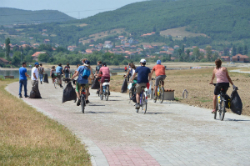 |
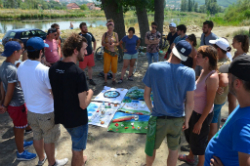 |
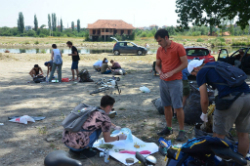 |
STEPANAVAN YOUTH CENTER (Armenia)
- Mane Papyan (group leader), Tornik Aghajanyan, Mariam Sahakyan, Zara Israyelyan, Siranush Sevoyan
What: Non-formal workshop about reusage of materials
When: 28h of July, 2017
Where: Vanadzor, Armenia
Description of action: The Armenian team organised a small workshop for teeanger beneficiaries of Orran benevolent non-governmental organisation "Helping families in need". In Vanadzor branch of Orran almost 20 children have got the chance to make their own skipping ropes for summer holidays using materials that seemed to be ‘useless’. Our team helped them to design them and make their skipping ropes more special for them. Before the workshop there was a small introduction about importance of reusage of garbage and materials that are put aside.
 |
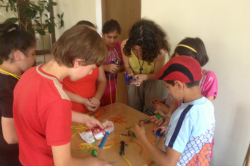 |
 |

The competition is closed. Congratulations to the winners!
Click on each picture to read about each environmental action in detail.
Environmental challenge accepted - Competition Rules
Funder:

The competition is closed. Congratulations to the winners!
BALTA DABA and YEE invited all active young people to join the international competition “Environmental challenge accepted”. The competition was organised as part of the project with the same name and was closed on 20 August. Check the competition entries above!
About competition:
We wanted to collect and promote the examples of active youth participation - when young people want to solve local environmental problems. Young people are an important part of society and they have every right to care about their future, protect the environment and make this world better. So let’s celebrate it with this competition!
The competition was open for young people who organised a local environmental action in the last 5 years with the aim to solve an environmental problem. They were asked to share their example and had a chance to win prizes from Patagonia!
The competition was open to:
- Young people under 30.
- Young people who worked on actions as an informal group or are members of an environmental organisation.
- One person should be selected as a contact person, but should represent the group or organisation under their agreement.
- Residents of programme and partner countries of the Erasmus+ programme.
Prizes:
The winners of the competition will receive prizes from Patagonia.
- 1 place winner - voucher for any Patagonia product for 500 EUR
- 2 place winner - voucher for any Patagonia product for 200 EUR
- Public voting winner - voucher for any Patagonia product for 100 EUR
Patagonia is an American clothing company which specializes in sustainable outdoor clothing. You can read more about Patagonia and their environmental work here: http://eu.patagonia.com/enGB/environmentalism
Patagonia blog “The Cleanest Line”: http://www.patagonia.com/blog/page/1/
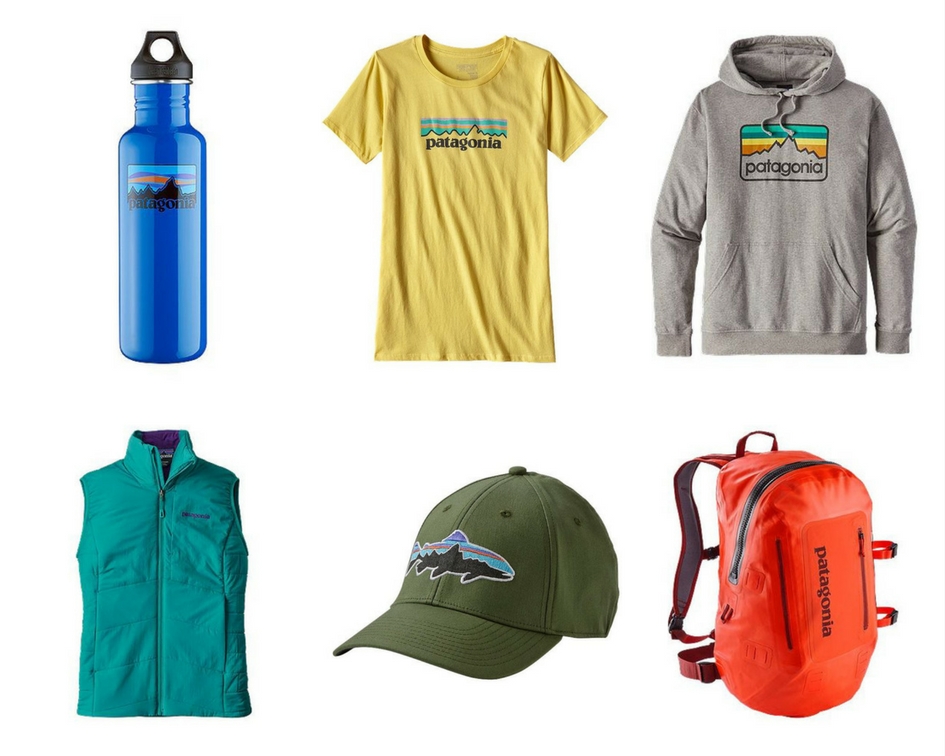
Courtesy of the website http://eu.patagonia.com/enCZ/home
Rules of competition:
- The winners will be selected by the project team of the project “Environmental challenge accepted”: representatives of YEE, BALTA DABA, OPE, Lithuanian Fund for Nature and Estonian Fund for Nature.
- The entries will be judged according to the following criteria:
- Creativity in developing your project
- Relevance and usefulness of the project
- Impact of the project
- Quality of project management
- Presentation of your project - The public vote will be open after 20 August on YEE website.
Funder:

Nesting places for birds
Dates: Regularly on weekends since November 2016
Place: Jaunpiebalga region, Latvia
What was done:
1. Selection of forest areas for field visits; 2. Field visits with task to find nesting places of specially protected bird species; 3. Submission of data to bird experts.
What is the result of activity: We have found 15 middle and large-scale nests. At least 1 of them has been identified as nest of specially protected bird species for whom micro-reserve could be established.
Why this method: Searching of nesting places allows to identify forest areas in Jaunpiebalga region that are important for specially protected bird species and to consider possible protection measures.
What follow-up is planned: We have discussed our findings with bird experts about possible protection measures. One of possible solutions that is on process is creation of micro-reserve for protection of identified nesting area.
Additional information: http://baltadaba.lv/aktuali/environmental-challenge-accepted/
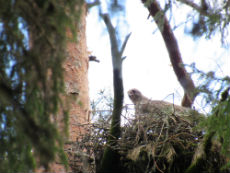 |
 |
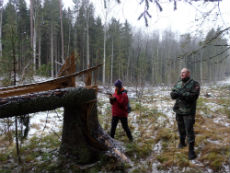 |
Reconstruction of bird houses
Dates: 1 April 2017
Place: Jaunpiebalga, Latvia
What was done:
- Communication with bird experts;
- Identification of bird houses that should be reconstructed (near local school);
- Organisation of public event;
- Field visit guided by expert in order to inform local participants about nesting habits of different bird species;
- Maintenance and reconstruction of old bird houses to provide safe nesting places;
- Creation of new bird houses.
What is the result of activity: During the activity 30 bird houses were restored and created. Participants were informed about the necessity to regularly maintain and control established bird houses. In total 14 local participants took part in the activity.
Why this method: It is very important not just to create new bird houses year by year but even more valuable is to control and maintain the existing ones in order to provide safe nesting obstacles for birds.
What follow-up is planned: In autumn we will monitor our bird houses again to evaluate weather our created houses were used by birds and to encourage local people to take initiative for next activities.
Additional information: http://baltadaba.lv/aktuali/environmental-challenge-accepted/
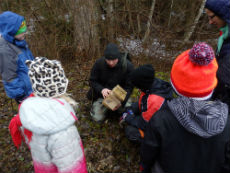 |
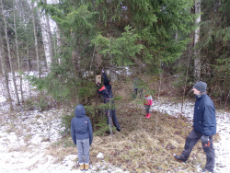 |
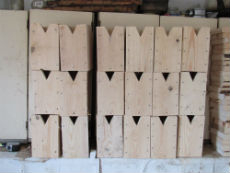 |
Creation of bird houses
Dates: Regularly since November 2016
Place: Jaunpiebalga and Gulbene region, Latvia
What was done:
- Identification of places for bird houses;
- Workshops for construction of bird houses;
- Monitoring results of nesting;
- Maintenance and cleaning bird houses for next nesting season.
What is the result of activity: During the project we renovated 53 bird houses and constructed 204 new bird houses (for different bird species: European Pied Flycatcher/Ficedula hypoleuca, Great Tit/Parus major, Tawny Owl/Strix aluco, Ural Owl/Strix uralensis, Eurasian Pygmy-owl/Glaucidium Passerinum and others). All activities were organised with involvement of children and young people who took part in creation of those bird houses in order to get knowledge about birds protection.
Why this method: There is lack of old trees where birds can nest. Holes in trees for certain bird species are places for reproducing. Creation of artificial nesting places provide ability for birds to reproduce in places where natural conditions are not good enough. Other problem is maintenance of birdhouses. Many birdhouses are built but are not safe anymore. We need to check them and renew if necessary in order to make those birdhouses effective for longer period.
What follow-up is planned: It is very important to not just create new bird houses year by year but even more valuable is to control and maintain the existing ones in order to provide safe nesting obstacles for birds. That is why it is our obligation to take care about bird houses we created and birds that are using them. We have long term plans for monitoring nesting success in our project sites and continue our activities in future.
Additional information: http://baltadaba.lv/pucu-buri-jaunpiebalgas-novada/
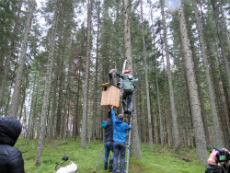 |
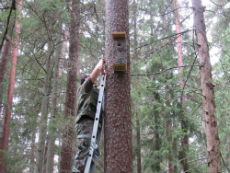 |
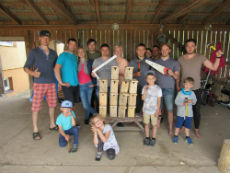 |
Funder:

Water monitoring of the Viesvile river
Dates: October 2016-summer 2017
Place: Lithuania, Viesvile
What was done:
- Project group was created (includes members of Student scientific society of natural sciences, students of Viesvile school and Young friends of forest society).
- Problems of the Viesvile river basin were stated.
- Monitoring of basic indicators in the Viešvilė river was done twice (2016 12 03; 2017 03 02).
- Water biomonitoring practical lecture was held for members of Student scientific society of natural sciences.
- Knowledge of water biomonitoring were transferred from students to local participants of group.
- First water biomonitoring in five sites of the river was done in May together with Viesvile’s Young friends of forest society.
- Preliminary results of the research were presented for town representatives.
- Further proposals for invasive plants species (Solidago virgaurea) research were given for member of Young friends of forest society.
What is the result of activity: The methodology of water biomonitoring was learned and first part of water biomonitoring was held. Members of Young friends of forest society got to know basics of the fauna, living in Viesvile river. Preliminary results of the monitoring show, that the water quality is getting worse after the river flows through the town. Further steps of invasive plants research were planned.
Why this method: Water biomonitoring shows longer-lasting water quality in the river, when compared to chemical water analysis. Also it is a great way to involve local community in the research, show the beauty of fauna living in the water and explain its importance. Invasive plants spread is an interesting and actual problem for members of Young friends of forest society. They have already started a research, searching for ways to cope with the spread of these plants, but bigger scientific background and support is needed to get more accurate results.
What follow-up is planned:
- Second water biomonitoring
- First microplastic monitoring in the Viesvile river
- Presentation of monitoring for local community during local fest
- Further support for investigation of invasive plant species
Additional information: Video made after first activity, for international biodiversity day:
More about alien species in Lithuania: http://www.glis.lt/?pid=126
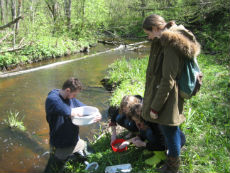 |
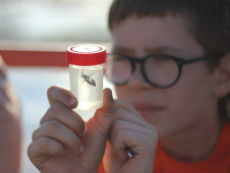 |
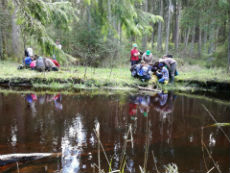 |
Water monitoring of the Viesvile river
Dates: October 2016-summer 2017
Place: Lithuania, Viesvile
What was done:
• Methodology for micro plastic investigation adapted and micro plastic research was done for first time in Viesvile river.
• Second water bio monitoring was done and water quality estimated.
• Viesvile river fauna, water quality and micro plastic issue were presented for local community during town Midsummer celebration.
What is the result of activity:
• Micro plastic particles were found in Viesvile river.
• Two water bio monitoring results support each other.
• Understanding about micro plastic issue, Viesvile river fauna and water quality was increased among town habitants.
Why did you choose this method?
Micro plastic problem is still poor known and not well researched, but it is getting more and more interest among naturalists. New investigations help to get better understanding about this issue. Society is not well informed about micro plastic issue, Viesvile river fauna and water quality. Better understanding about these issues increases people ecological awareness and contributes to their action for environmental protection.
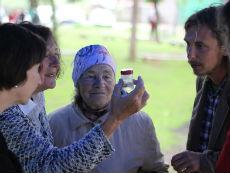 |
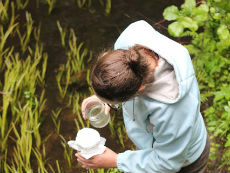 |
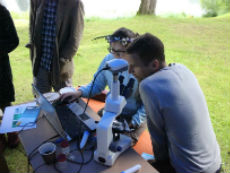 |
Invasive plant species control in Viesvile nature reserve and water biomonitoring in Viesvile river
Dates: 25/08/2017 – 27/08/2017
Place: Viesvile, Lithuania
What was done:
- Two invasive plants species - thicket shadbush ((Amelanchier spicata) and northern red oak (Quercus rubra) were chosen to control in cooperation with Viesvile Nature reserve.
- Most vulnerable places for invasive plants species spread were selected and work was done in these areas.
- Try-yourself waterbiomonitoring in Viesvile river was done together with Young Friends of the forest.
What is the result of activity?
Thicket shadbush and northern red oak were cutted in 3 areas in Viesvile nature reserve. The population of these trees was considerably reduced and the spread to the nature reserve controlled.
Why did you choose this method?
Invasive plants cause ecological problems as changing environmental conditions and outcompeting native species. Usually they grow in damaged habitats (e.g. close to roads), but in Viesvile two invasive plants – thicket shadbush and northern red oak are also spreading to nature reserve and threatening it’s specific flora. Work was done by hand tools in places, which are difficult to access and/or where these plants are distributed in large area, so it is not efficient to work with machinery.
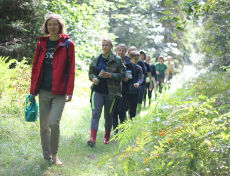 |
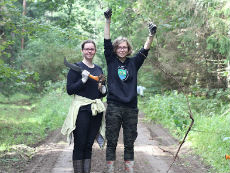 |
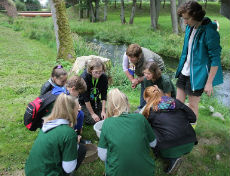 |
Funder:

Lithuanian Fund for Nature - Environmental challenges
Meeting with volunteers
Dates: 3-4 March 2017
Place: Palupõhja, Estonia
What was done: Group meeting to plan activities in summer.
What is the result of activity: With this two day meeting we focused on developing the plan on how to solve the problems in our project site - last Freshwater pearl mussel habitat in Estonia. We also discussed the publicity of the project - how to increase the interest among people, agencies and policy makers. During the meeting there were also three presentations - Kristjan Oopkaup from the University of Tartu talked about micropollutants in the water and how they affect river habitat. Dr. Kristjan Piirimäe from ELF gave an overview about agricultural diffuse pollution how it can be reduced. And finally Girts Baranovskis from Balta Daba talked about Latvian activities.
Why this method: Our plan was to have an intensive two-day meeting to get to know each other and to plan forthcoming activities. To get more input, two experts were included to give presentations about different perspectives how to deal with water pollution.
What follow-up is planned: Regular Skype meetings before intensive fieldworks in July.
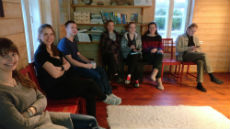 |
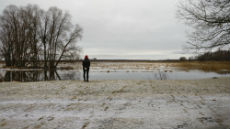 |
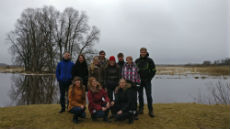 |
Restoring freshwater pearl mussel habitat
Dates: 6 - 9 July 2017
Place: Lahemaa national park, Estonia
What was done:
- Mapping problematic areas in the river (beaver dams, flow barriers, salmon spawning grounds).
- Measuring water physical-chemical parameters before and after beaver damn.
- Removing two beaver dams.
- Measuring physical- and chemical parameters of the water after beaver dam removal.
- Removing several flow barriers in the river.
- Building sediment traps into ditch entering to the river.
What is the result of activity: We found more than 40 flow barriers in the river. We found kilometres of salmon spawning grounds. We saw more than 50 freshwater pearl mussels. We removed two beaver dams and several flow barriers. Sediment trap was built into the drainage ditch.
Why this method: Freshwater pearl mussels (especially juvenile) are extremely vulnerable to the changes of river morphology and physical-chemical parameters. Sediments, which will eventually pile up in the river due to the nearby agricultural activities and forest drainage, will affect their habitat. In addition, the salmons are extremely important for mussels' life cycle and therefore it is also important to remove all the flow barriers and beaver dams for salmon to have good access to their breeding areas. Beaver damns also reduce the flow rate and increase the water table in the river, which result in lower oxygen concentration and higher water temperature. Low oxygen and high water temperature is not suitable for both salmons and mussels. Therefore it is crucial to remove all flow barriers and especially beaver dams.
What follow-up is planned: Collected data will be presented to the Estonian Environmental Board. Consultation with some experts is planned to plan further activities.
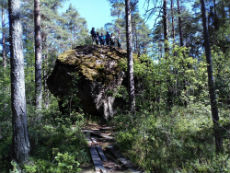 |
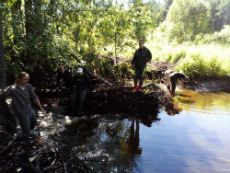 |
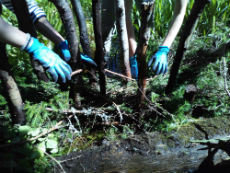 |
Restoring drained bog
Dates: 3 - 6 August 2017
Place: Soosaare bog, Põltsamaa parish, Estonia
What was done:
- Locating drainage ditches in the bog
- Building dams with peat to stop water flow from bog to ditches
What is the result of this activity: During the Soviet period, in Estonia a lot of bogs were drained to increase agricultural land and to mine peat. These highly vulnerable heterogeneous ecosystems were totally changed into homogeneous landscapes, which started to emit huge amount of carbon into the atmosphere due to the peat mineralization. In recent years, many previously drained bogs, which have not been used for forestry, agriculture etc. were restored. If drained peat lands are restored they start to sequester carbon and will help to fight against climate warming.
Why this method: Closing drainage ditches in the bog using peat, which was cut from the same bog is one of the most sustainable and effectives ways to stop water flowing away from the bog. This method will increase water level in the bog and therefore we helping Sphagnum mosses to grow and increase soil organic content.
What follow-up is planned: Evaluation of the effectiveness of the damns. If some dams are damaged they will be rebuilt.
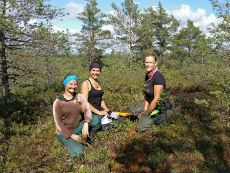 |
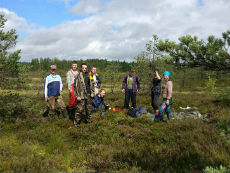 |
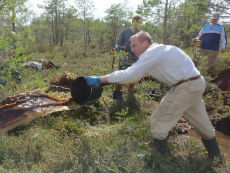 |
Funder:

Estonian Fund for Nature - Environmental challenges
Main page of the projectRestoring drained bog
Project team of the Lithuanian Fund for Nature
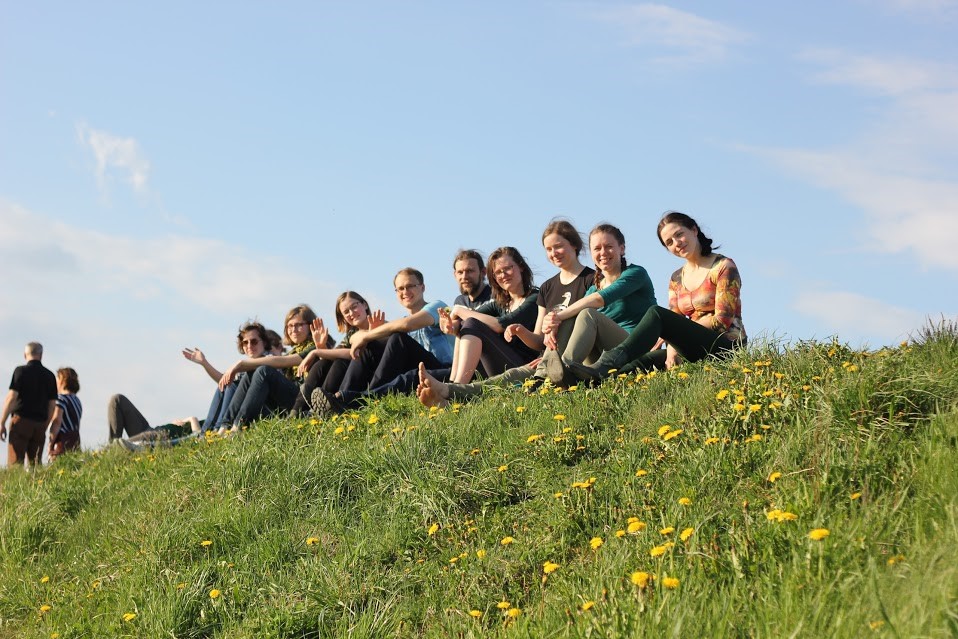
Group photo of the project group, from left to the right: Kamile Izganaityte, Milda Riepsaite, Kristina Valaviciute, Tomas Pocius, Mantas Adomaitis, Viktorija Kuodytė, Adele Markeviciute, Ruta Rutkunaite, Julija Petrosiute
|
Results of local actions What has been achieved? Was the problem solved? We reached our main goals in two fields:
Will you work on it more? How will you follow-up on the problem? We are staying in touch with Student scientific society of natural sciences and Young friends of the forest in Viesvile. Potentially we will work together on new projects in the near future. |
Water quality of Viesvile river
What is the issue: Viesvile nature reserve was founded in year 1991 to protect the basin of the Viesvile river. This river further flows through the town of Viesvile and suffers from anthropogenic influence. After the town the Viesvile river flows to the biggest Lithuanian river – Nemunas and then goes about 100 km to the Baltic sea. The biggest problem about the Viesvile river is sewage of the town (about 1000 inhabitants). The water is cleaned in local water cleaning plant, but it is suggested, that water quality is getting worse after it flows through the city. Another big issue talking about water quality is microplastic. Microplastic problem is not very well known in public yet, but it causes water pollution and especially water fauna suffers from it. The third problem is spreading of invasive species to the area close to the Viesvile river. Local students have started a research about Solidago canadensis and are looking for the ways to stop its spread, support for this research is needed.
What should be done: In order to investigate the water quality and involve local community in the process of solving water pollution problem, water bio monitoring and microplastic investigation should be done and public awareness raised. Invasive species research has to be repeated with bigger scientific background.
Expected results: The river monitoring shows the change of water quality as it flows from source to the mouth. The microplastic is investigated for the first time in the Viesvile river. Different ways of fight with invasive species are performed in Viesvile river basin area.
Funder:

PortuGreen - reforestation
Dates: 18 March 2017
Place: Mata de S. Brás, Santa Cruz do Bispo, Matosinhos, Portugal
What was done: Reforestation of Mata de S. Brás with native species and intervention against a invasive tree of the generus Acacea.
What is the result of activity: Plantation of 144 trees and bushes with the help of 60 volunteers from several organisations.
Why this method: Our plan is to restore a native ecosystem in the area of Mata de S. Brás. The help of the volunteers makes the task quicker.
What follow-up is planned: Controlling the plants to not let them dry, control of the spontaneous species so they do no cover the new plants and continuing the intervention against the invasive species so we can gain more field to plant natives.
Additional information: 100milarvores.pt; invasoras.pt
Local partners:
- União de Freguesias de Perafita-Lavra-Santa Cruz do Bispo - http://www.perafita-lavra- santacruzbispo.pt/
- Câmara Municipal Matosinhos - http://www.cm-matosinhos.pt/Estabelecimento
- Estabelecimento Prisional de Santa Cruz do Bispo - masculine
- Projecto Futuro - http://www.100milarvores.pt/
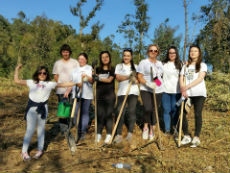 |
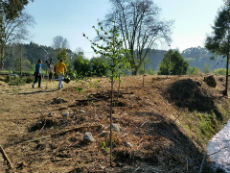 |
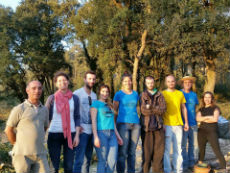 |
Phytoremediation water treatment system
Dates: 29 April 2017
Place: Guifões, Matosinhos, Portugal
What was done: Beginning of the construction of ponds that have the purpose to treat the water of a little stream. First pond - covered with a canvas, filled with gravel and planted with local plants. Second pond - covered with canvas and filled with gravel. Thrid pond - only with gravel.
What is the result of activity: All of the 3 steps completed and the ponds started to fill with water.
Why this method: To try to do this experimental method to treat this stream full of organic matter that comes from the residual water of the houses close by. By implementing this system, that have low cost, we can raise awareness for alternatives to the conventional water treatment systems.
What follow-up is planned: Monitoring the structure built. To see if it hangs on with the rain. To control the growth of the plants.
Local partners:
- União de Freguesias Custóias-Leça do Balio-Guifões - http://www.jf-custoias- lecabalio-guifoes.pt/
- Câmara Municipal Matosinhos - http://www.cm-matosinhos.pt/
- Administração dos portos do Douro, Leixões e Viana do Castelo - http://www.apdl.pt/header
- Centro Interdisciplinar de Investigação Marinha e Ambiental - http://www.ciimar.up.pt/
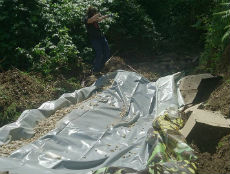 |
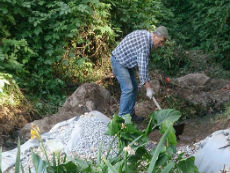 |
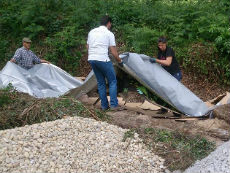 |
PortuGreen - control of invasive species
Dates: 6 May 2017
Place: Mata de S. Brás, Santa Cruz do Bispo, Matosinhos, Portugal
What was done: Peeling of trees of the generus Acacea, pulling out other invasive species and pulling out spontaneous weeds near the planted trees.
What is the result of activity: Peeling of a big number of trees. With pulling out invasive species we try to gain more space for reforestation and by pulling out spontaneous to prevent the planted trees from being suffocated by them.
Why this method: Best way documented to prevent these particular invasive species of growing.
What follow-up is planned: Keep these action till the end of the project and monitoring the growth of the plants.
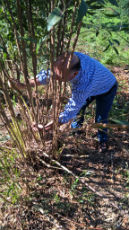 |
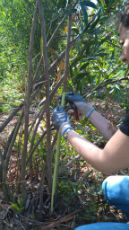 |
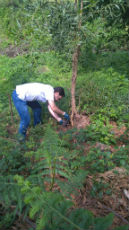 |
PortuGreen - reforestation
Dates: 17 June 2017
Place: Mata de S. Brás, Santa Cruz do Bispo, Matosinhos, Portugal
What was done: Cleaning of the spontaneous weeds surrounding the planted trees boiler and peeling of some trees of the Acacea generus.
What is the result of activity: With the cleaning of the planted trees boiler it is possible to reach them so we can keep up with the monitoring plan. The peeling of the Acacea keeps rolling the invasive species combat plan.
Why this method: If the surrounds of the trees were not cleaned, they could be suffocated by the others. Besides, it facilitates the monitoring plan as the trees become visible.
What follow-up is planned: Monitoring all the tree and check their "health" condition.
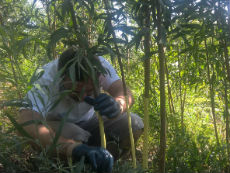 |
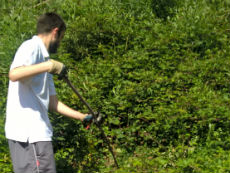 |
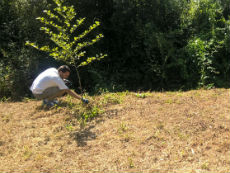 |
PortuGreen - reforestation
Dates: 12 July 2017
Place: Mata de S. Brás, Santa Cruz do Bispo, Matosinhos, Portugal
What was done: A short introduction to the international project (what it is about) and to the autochthonous Portuguese forest to children between 8 and 12 years old. After that we made a practical activity of removal of the weeds from the surrounding areas of the planted trees and the peeling of the generus Acacia, and invasive tree that exist in the field.
What is the result of activity: To get to the planted trees is now easier and we got more invasive ones peeled, which helps the working group of the project to accomplish this important task of their work.
Why this method: It is the one we have been to applying since the beginning of the project.
What follow-up is planned: The maintenance of the planted trees (watering).
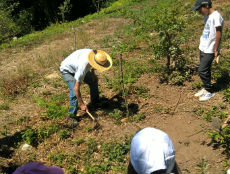 |
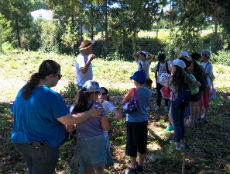 |
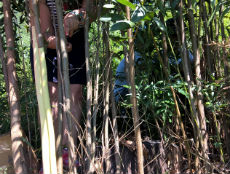 |
PortuGreen - maintenance
Dates: 21 October 2017
Place: Mata de S. Brás, Santa Cruz do Bispo, Matosinhos, Portugal
What was done: Cleaning the surroundings of the planted trees and protecting them with a plastic tube.
What is the result of activity: The cleaning of the surroundings of the planted trees prevents the trees from suffocation by the spontaneous weeds. The protection tubes prevents the trees trunks to get hurt by the cleaning process or any wild animal.
Why this method: It is the most common used in the reforestation processes and it is easy to do.
What follow-up is planned: To meet with all the local partners and schedule future actions such as cleaning of the invasive species, monitoring the planted trees and planning next plantation actions.
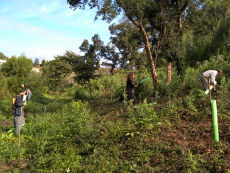 |
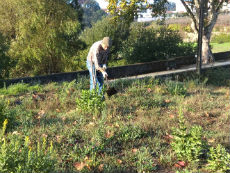 |
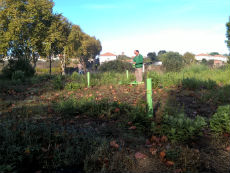 |
Funder:

OPE - Environmental challenges
Main page of the projectPortuGreen - maintenance

To solve the selected local environmental projects, partners of the project "Environmental challenge accepted" organised local actions with their groups. You can read more about each action on the page of each partner.
|
Results of local actions What has been achieved? Was the problem solved? With this partnership we managed to start a project of reforesting a wood area with Autochthonous Iberian plants. The problem hasn't been completely solved as the plants take time to grow. So, maintenace actions should take place. The second part of the project, to construct a phyto remediation pond, was achieved. But as the first part, it needs maintenance actions and a watch on the built structure and the plants. Yes. In both cases a plan will be created for 2018, that will consist of works in the areas and keeping in touch with the local partners and the population that already participated on the previous actions. |
PortuGreen - native reforestation
What is the issue: Small forest with a lot of invasive plants and good examples of native trees that could be injured by the invasive or loose space and opportunity to spread because of the lack of space.
What should be done: Remove the invasive species to gain space to plant more native plants, monitor their fixation and if the invasive keeps growing or not. If it is needed, implement more actions against the invasions.
Expected results: By the end of the project make sure that every plant planted is alive. Measure the area gained by the invasive species cleaning to propose future plantations.
Phytoremediation water treatment system
What is the issue: Bad quality of a stream water due to organic pollution. The stream goes directly to a big river increasing its pollution.
What should be done: Construction of ponds with canvas, gavel and plants to extract the pollution out of the water. Create actions to improve the margins of the stream effect by planting riparian plants.
Expected results: Check if the ponds structure hold with the water variation; analyse the plants fixation in the ponds; analyse the margins structure and the plants colonization.
Funder:


Approved documents
Minutes from the Annual Meeting
Invitation
Invitation to the Annual Meeting 2017
Welcome Pack for Annual Meeting
Call for Board Members 2017-2018
Official documents
Agenda of the Annual Meeting 2017
Report - Review of Membership 2017
Report of organisations applying for membership
Project Policy (to be voted)
Human Resources Policy (to be voted)
Internal Audit Report 2016-2017
Board Reports
Report External Relations Officer and Vice-chair 2016-2017
Report Member Organisations Officer 2016-2017
Report Project Officer 2016-2017
Report Publications and Promotion Officer 2016-2017




| BALTA DABA (LATVIA) | ||
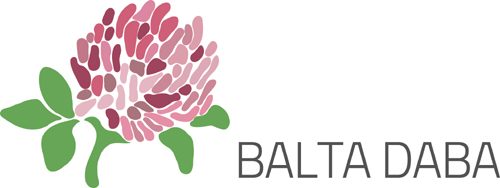 |
www.baltadaba.lv | BALTA DABA is a non-profit, non-governmental youth environmental organisation. It was established in year 2010 in order to promote the preservation of the Latvian nature and to promote the young people’s initiatives and participation in the decision-making process and public life. Our target audience is young people in age of 18-30 years. We work with environmental education methods supporting young people initiatives for local environment protection. |
| ESTONIAN FUND FOR NATURE (ESTONIA) | ||
 |
www.elfond.ee | Estonian Fund for Nature (ELF) is a non-governmental organisation dedicated to nature conservation. ELF’s mission is to preserve endangered species and their habitats, natural landscapes and natural associations typical of Estonia. ELF promotes the sustainable use of natural resources, raises environmental awareness in the society and seeks solutions for preserving a clean environment for future generations. ELF is politically and economically independent non-governmental organisation that provides society with the necessary expertise for nature conservation and helps unite the state and science institutions, businesses and active citizens in their efforts of protecting common natural resources. |
| Organização para a Promoção dos Ecoclubes - OPE (PORTUGAL) | ||
 |
opeportugal.wix.com/ecoclubes_pt | Ecoclubes are a non-governmental organisation (NGO), composed by groups of young people who organize actions with other institutions to promote active participation and involvement of the community members in order to solve local problems.
Each group chooses their action plan according to their needs and, as a networker, OPE promotes activities for the promotion of people's conscience about the need of public participation in the resolution of the local environmental problems, creates mechanisms for communication among the several ecoclubes, establishes partnerships and promotes the cooperation between OPE and other organisations, promotes the intercultural exchange and new experiences between OPE members and other organisations. |
| LITHUANIAN FUND FOR NATURE (LITHUANIA) | ||
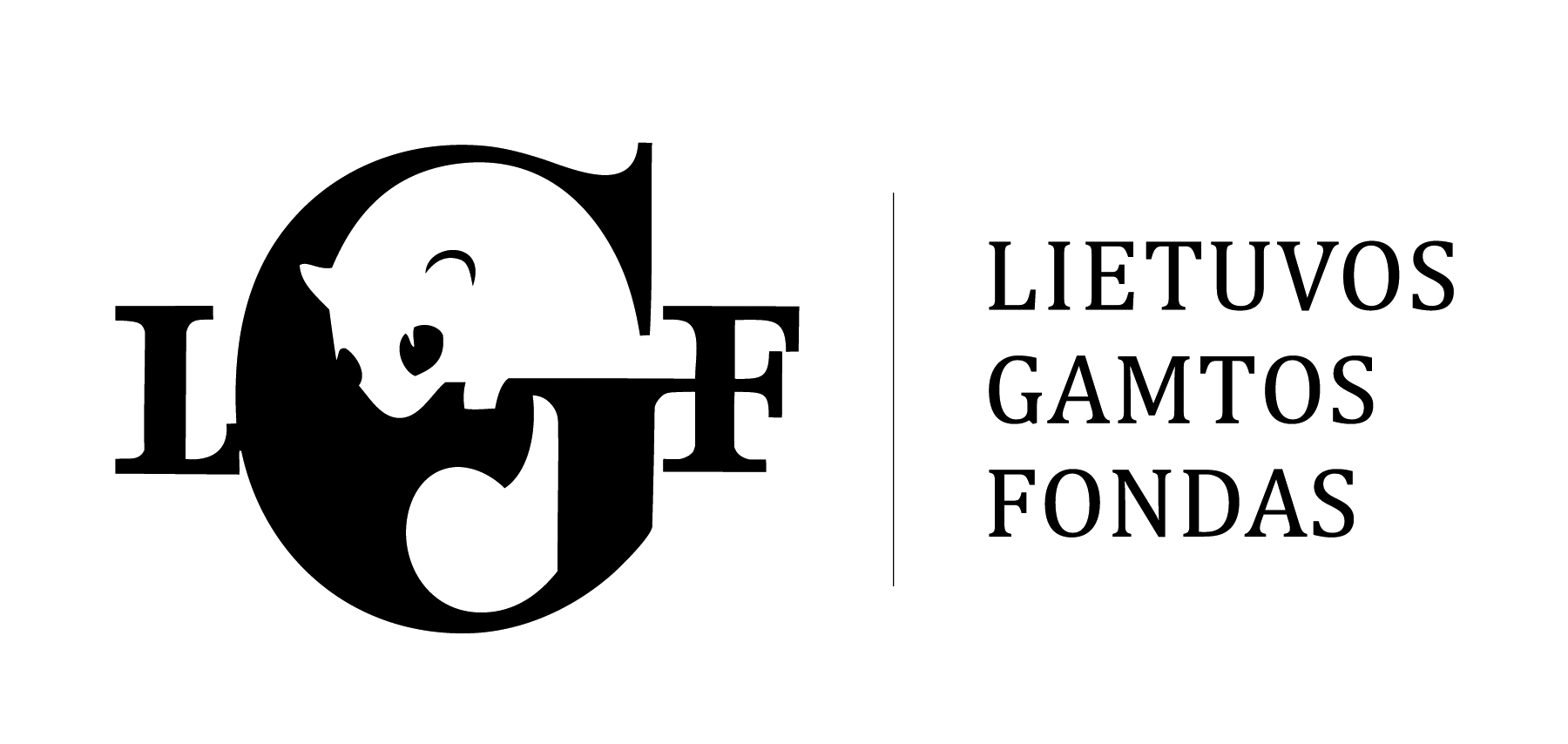 |
www.glis.lt | The Lithuanian Fund for Nature (LFN) is a non-governmental organisation for the conservation of nature. Its activities are closely related to the preservation of wildlife. Founded in 1991, the LFN is one of the first conservation organisations in Lithuania.
The LFN’s activities include cooperation with national, municipal, scientific, non-governmental, and private institutions in these areas: preservation of rare and disappearing species and their habitats, maintenance and restoration of natural habitats, preservation of water bodies and resources therein, and environmental education. |
The Annual Meeting 2016 of Youth and Environment Europe took place from 30th August to 1st September 2016 in Prague, Czech Republic. Here you can find all the information and documents related to this event.
Approved documents
Minutes from the Annual Meeting 2016
Invitation
Invitation to the Annual Meeting 2016
Official documents
Report of organisations applying for membership
Proposal changes in YEE Statutes
Strategic Plan 2017-2019 (to be voted)
Draft of Work Plan 2017 (to be completed and voted)
Project Policy (to be voted)
Board Member Policy (to be voted)
Sustainability Policy (to be voted)
Presentation - Sustainability in YEE (Prezi presentation)
Guidelines for project teams (updated in 2016)
Board reports
Report Chairperson 2015-2016, Anja Wilken
Report Treasurer 2015-2016, Janis Porietis
Report Project Officer and Vice-chair 2015-2016, Zaruhi Stepanyan
Report Member Organisations Officer 2015-2016, Marieta Baricevic
Report External Relations Officer 2015-2016, Christiane Klemm
Report Publications and Promotion Officer 2015-2016, Jessica Massucco
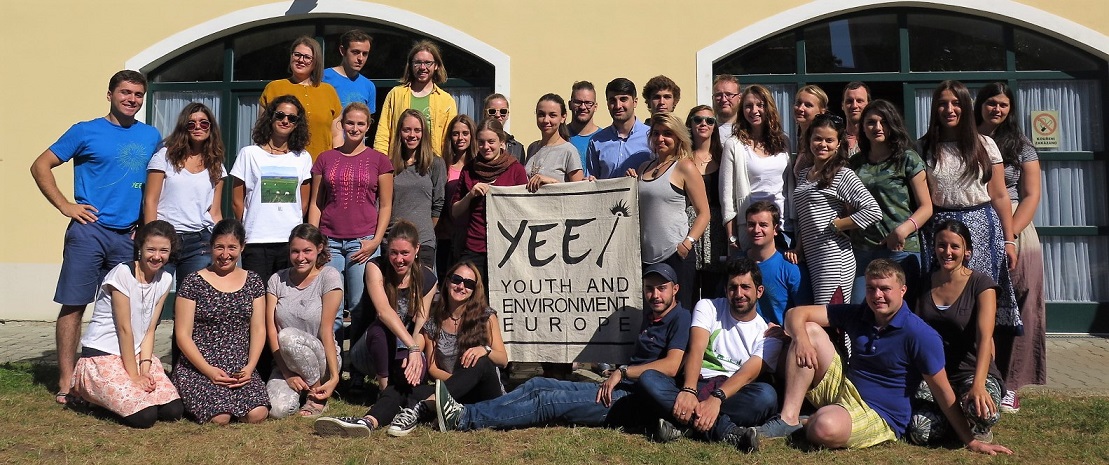
Organised with the financial support of:



Here you can find useful materials, links and books that can be helpful when working on your green start-up idea.
Materials
Useful links
Design thinking
- DIY: Parctical tools to trigger and support social innovation
- Design kit about human centered design
Lean canvas
- Institute of Design at Stanford: Take a virtual course
- Ideo: Designing a path out of poverty
- Social Impact Award
Books
 Change by Design (by Tim Brown, 2009)
Change by Design (by Tim Brown, 2009)
How design thinking transforms organizations and inspires innovation
 Green Entrepreneur Handbook (by Eric Koester, 2010)
Green Entrepreneur Handbook (by Eric Koester, 2010)
The guide to building and growing a green and clean business (what every engineer should know)
 What's Mine Is Yours (by Rachel Botsman and Roo Rogers, 2010)
What's Mine Is Yours (by Rachel Botsman and Roo Rogers, 2010)
The rise of collaborative consumption
 Sustainable Excellence (by Aron Cramer and Zachary Karabell, 2010)
Sustainable Excellence (by Aron Cramer and Zachary Karabell, 2010)
The future of business in a fast-changing world
 First Things First (by Stephen R. Covey, 1996)
First Things First (by Stephen R. Covey, 1996)
Our most valuable asset is time, but not every entrepreneur knows how to properly use that time
 Zero To One (by Peter Thiel, 2014)
Zero To One (by Peter Thiel, 2014)
A new way of thinking about innovation: it starts by learning to ask the questions that lead you to find value in unexpected places.
This international campaign is part of the long-term project "Green Entrepreneurship". It aims to promote green businesses initiated by young people and to encourage and inspire more young people to start their green start-ups. It will spread the concept of green youth entrepreneurship through good, positive and successful examples of green business throughout Europe.
The examples are presented through short video-interviews created by many of the partner organisations of "Green Entrepreneurship".
Community garden - Czech Republic
Recycled glass art - Latvia
From city banners to upcycled bags - Poland
Healthy Thai food - Romania
Essential oils and sage tea - Croatia
Art, music and recreation in nature - Latvia
Prague sustainable living guide - Czech Republic
Workshops from homemade cosmetics - Czech Republic
As a follow-up of the training course "Supporting youth creating green start-ups" (Spain, April 2015), the partner organisations of "Green Entrepreneurship" organised local workshops and events back in the countries. Find out here what were the objectives of the workshops and what happened in each country.
Obejctives:
- Share the tools and knowledge gained in the TC "Supporting youth creating green start-ups" with the local community of the partner organisations
- Inspire young people by showing them examples of successful green start-ups
- Provide space for young people with start-up ideas to network
- Find young people with green start-up ideas that could be potential participants of the TC "How to be a green entrepreneur" (Prague, October 2015)
Youth and Environment Europe - Czech Republic
Where and when: Kokoza community garden, Prague, Czech Republic, 29 June 2015
Who took part: 20 students, youth workers, volunteers, people interested in entrepreneurship
What: The event was held at Kokoza community garden. Since Kokoza is an example of a successful green business, we deemed the location as an attractive opportunity for the visitors. The event consisted of several parts. First, we started with a work in the garden, like cutting grass, watering plants etc. Afterwards, we held a world café with several young green entrepreneurs. Other than Kokoza, there were also three other startups who shared their stories: Birdsong Coffee, Vinylove Hodiny and Greenglasses. Their presentations were followed by Q&A sessions where the visitors of the events could ask and learn more about the green entrepreneurships. Later on, we did an upcycling workshop where the people interested could make a wallets out of old tetrapak and earrings out of old vinyls. During the event there were vegetarian snacks served.
Results: Participants learnt about the importance of nature-friendly business. They got inspired by the successful stories of the young entrepreneurs. They found out what are the first steps, obstacles, risks and gratification of starting a green start-up. They learnt about the advantages of innovative thinking.


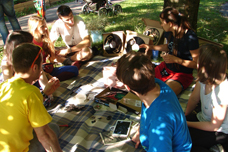
Asociata Ecouri Verzi - Romania
Where and when: Lotus Restaurant, Cluj-Napoca, Romania, 18 June 2015
Who took part: 14 students, youth workers, nature protection volunteers
What: The meeting was organised at Lotus Restaurant, in Cluj-Napoca, Romania. There were 14 people present, with their age ranging from 14 years old to 45 years old, and it took about three hours. We started with a brief presentation of the "Green Entrepreneurship" project, and the training course we attended in Asturias. The following discussion, in which all the participants had an active involvement, was centered around what a green start-up is, what are the motivations for starting a green start-up and green start-up examples. The owner of the Lotus Restaurant, a green start-up itself, presented his business, pointing out the challenges, the opportunities and his vision for the future of his business. In the end, there was a short presentation of the opportunity for young people to attend the training course "How to be a green entrepreneur" which will take place in Prague, in October, as part of the "Green Entrepreneurship" project.
Results: Raining awareness regarding the need for sustainable development, and for greener businesses; knowledge about what a green start-up is; knowledge about green start-up examples in Europe and Romania and knowledge about the "Green Entrepreneurship" project activities.



Humusz - Hungary
Where and when: Humusz Alliance, Budapest, Hungary, 19 June 2015
Who took part: Twenty youngsters who have a green idea which is not fully developed yet
What: Our aim was to gather useful and practical information about starting a green (eco-conscious) entrepreneurship and to show good examples of on-going projects and entrepreneurs. We had a presentation about the legal tasks and opportunities and one about the financial parts. We asked the president of Humusz Alliance to share her knowledge about the green entrepreneurship: how to differentiate between greenwashing and being really green, what should the youngsters focus on, what should they consider as a leader of a company, etc. After the presentations we organised a round table discussion with prosperous on-going entrepreneurships and their leaders to show how different ideas could work in Hungary, what the flaws, opportunities and responsibilities are as a young entrepreneur.
We provided catering as well, vegetarian main course, some dips and fruits and fair trade coffee and tea.
Results: As organisers of the local workshop we learnt about advertisment and hosting, facilitating and organisatinal skills.


OPE - Portugal
Where and when: Students Organization of Oporto Science University, 3 June 2015
Who took part: Fifteen university students
What: Most of the participants were already green in some way because they were familiar with gardening (how to safe water or how to build indoor and outdoor city gardens). The purpose of the workshop was to promote the Green Entrepreneurship project, while at the same time promoting entrepreneurship among the participants. As a part of our workshop, we also included helping evaluation tools of an initiating business. During the 5 hours workshop, the participants had a presentation of Green Entrepreneurship project, of ecoclubs and YEE. In the second part, they filled the Lean Canvas sheet with some business ideas.
Results: We analised the participants' business ideas and synthesized it in Lean Canvas sheet. Also analysed if their idea need to be shaped or not.


Homo Ecos - Latvia
Where and when: "The Green Floor", Riga, Latvia, 19 August 2015
Who took part: Fifteen young people who either have plans to start a business or already own a start-up
What: The seminar was meant to be both an inspiring and educational session for young entrepreneurs, and also a networking opportunity for students, recent graduates and young entrepreneurs. After quick introductions, the floor was given to Anna Aizsilniece, owner and founder of recycled.lv - a local fashion brand based on repurposing old clothes. Some participants who had already taken first steps as an entrepreneur also shared their experiences. Soon enough, a lively debate about consumerism, making profit, use of resources, advertisement, education and greenwashing started. After the coffee break, participants divided into groups to write a business plan for a fictional green start-up, by asking and answering lots of simple questions starting with „what...?", „why...?", „who...?, etc. Each group presented their idea through a 30-second „elevator pitch" to a prospective business contact. Ideas included an online radio station where anybody can share their views and opinions, a consulting firm that helps companies be more sustainable, and a producer of eco-lamps. Finally, The Green Toolbox (www.greentoolbox.org) was introduced as a tool to help analyse and „greenify" any business. After the official part of the seminar was over, the participants moved to a near-by restaurant to get to know each other even better and to celebrate the conclusion a successful seminar.
Results: Most of the participants did not have any immediate plans to start a business before coming to the training - they went away with a dose of inspiration and encouragement. For others, the combination of the words "green" and "business" offered a new perspective.


 The long-term project "Green entrepreneurship" was developed within Youth and Environment Europe network based on observation of lack of work opportunities of young people, lack of support for young entrepreneurs and the need to promote environmentally friendly solutions.
The long-term project "Green entrepreneurship" was developed within Youth and Environment Europe network based on observation of lack of work opportunities of young people, lack of support for young entrepreneurs and the need to promote environmentally friendly solutions.
The project will consist of several activities:
- Training Course "Supporting youth creating green start-ups" - TC for coordinators/youth workers - 22 people from 10 countries (Czech Republic, Spain, Latvia, Ireland, Croatia, Portugal, Romania, Hungary, Poland and Italy) will develop their skills in promoting, coordinating, supporting young people.
- Local workshops in the partner countries - to promote the concept of green entrepreneurship and find young people with start-up ideas
- International Campaign - will spread and promote the green youth entrepreneurship through examples of successful projects (by videos and other tools).
- Training Course "How to be a green entrepreneur" - TC for young entrepreneurs - 23 people from 11 countries (Czech Republic, Spain, Latvia, Ireland, Croatia, Portugal, Romania, Hungary, Poland, Italy and Belgium) will train their skills needed to create their green initiatives (innovation, management, marketing, fundraising, legal issues).
Aims and ojectives:
The project aims to facilitate the access of young people to the labor market by training their skills, inspiring them to create their own green start-ups and promoting entrepreneurship.
Objectives:
- To train young people's basic skills on how to create green start-ups.
- To empower and inspire young people through successful examples and stories.
- To give young entrepreneurs support when starting their own green business.
- To encourage young people to think "out of the box" (innovative thinking).
- To spread environmentally friendly practices among young entrepreneurs.
Contact person: If you want to know more about this project, please contact Mercedes Fioravanti This email address is being protected from spambots. You need JavaScript enabled to view it.
The Annual Meeting 2015 of Youth and Environment Europe took place from 17th to 19th of July 2015 in Prague, Czech Republic. Here you can find all the information and documents related to this event.
Approved documents
Minutes from the Annual Meeting
YEE Short-term Strategies 2015-2016
Invitation
Invitation to the Annual Meeting 2015
Official documents
Report of organisations applying for membership
Proposal for new structure for strategies and work plan
Short-term Strategies 2015-2016
Board reports
Report Chairperson 2014-2015, Anja Wilken
Report Treasurer 2014-2015, Vasily Bashutkin
Report External Relations Officer 2014-2015, Zaruhi Stepanyan
Report Member Organisations Officer 2014-2015, Lira Hakani
Report Project Officer 2014-2015, Bianca Badea
Report Publications and Promotion Officer 2014-2015, Christiane Klemm
The Annual Meeting 2014 of Youth and Environment Europe took place from 15th to 17th of August 2014 in Valmiera, Latvia. Here you can find all the information and documents related to this event.
Approved documents
Minutes from the Annual Meeting
Short-term Strategies 2014-2015
Invitation
Invitation to the Annual Meeting 2014
Official documents
Report of organisations applying for membership
Proposal for change in membership fees
Board reports
Report Chairperson 2013-2014, Anja Wilken
Report External Relations Officer 2013-2014, Zaruhi Stepanyan
Report Member Organisations Officer 2013-2014, Lira Hakani
Report Project Officer 2013-2014, Bianca Badea
Report Publications and Promotion Officer 2013-2014, Vasily Bashutkin
Report Treasurer 2013-2014, Francesco Chiechi - not received
In this section you can find information about the YEE Annual Meeting 2013 which took place from July 19th to July 21st 2013 in the Ecocenter Svycarna in Josefov/Adamov, Czech Republic.
During the Annual Meeting YEE celebrated 30th anniversary!
Approved documents
Minutes from the Annual Meeting 2013
Invitation
Invitation to the Annual Meeting 2013
Official documents
Amendments to YEE official documents (proposed by the board)
Table for amendments to YEE official documents (to be proposed)
Review and cancellation of membership
Report of organisations applying for membership
Board members reports
Report Chariperson 2012-2013, Kyrylo Ivliev
Report Treasurer 2012-2013, Girts Baranovskis
Report External Relations Officer 2012-2013, Zaruhi Stepanyan
Report Member Organizations Officer 2012-2013, Tijana Ljubenović
Report Project Officer 2012-2013, Christiane Klemm
Report Publications and Promotion Officer 2012-2013, Tomek Janiak
In this section you can find information about the YEE Annual Meeting 2012 which took place from July 26th to July 29th 2012 in the Ecocenter Paleta in Oucmanice, Czech Republic.
Approved documents
- Minutes from the Annual Meeting 2012
- Working plan 2013
- Rules of Procedure 2012
- Long Term strategies
- Short Term strategies
- Draft Budget 2013
Invitation
Invitation for the Annual Meeting 2012
Final Agenda, Application Form and Info sheet
- Final Agenda of the YEE AM 2012
- Application form for the Annual Meeting
- Info sheet YEE Annual Meeting 2012
Official documents
- YEE Annual Report 2011-2012
- YEE Secretariat Report 2011-2012
- Report Chairperson 2011-2012, Irena Oucipova
- Report Project Officer 2011-2012, Monika Kotulak
- Report Treasurer 2011-2012, Sona Grigoryan
- Report Publication and promotional officer 2011-2012, Tomas Protivinsky
- Report External Relations Officer 2011-2012, Kyrylo Ivliev
- Report Organisations applying for membership AM 2012
- Notice of Review and Cancellation of membership
Looking forward to meeting you during the Annual Meeting 2012!
In this section you can find information about YEE Annual Meetings:
- Annual Meeting 2018
- Annual Meeting 2017
- Annual Meeting 2016
- Annual Meeting 2015
- Annual Meeting 2014
- Annual Meeting 2013
- Annual Meeting 2012
- Annual Meeting 2011
- Annual Meeting 2010
- Annual Meeting 2009
YEE Annual Meetings are organised with the financial support of:
 |
 |
 |
Information for participants
When: 4-11 March 2012
Where: European Youth Centre, Strasbourg, France
Activity type: Study session
Contact person: Gosia Zubowicz This email address is being protected from spambots. You need JavaScript enabled to view it.
Materials from the session:
- Presentation on the Manual on Human Rights and the Environment (by Merete Bjerregaard)
- Manual on Human Rights and the Environment
- Presentation on Human Rights (by Bastian)
- Presentation on Environmental Law (by Ilaria)
- Presentation on Participation (by Pawel)
- Presentation on Campaigning (by Darek)
- Book 'How to win campaigns' Chrise Rose
- List of the movies from the movie night
- Booklet on environmental law Chapter 1 Chapter 2 Chapter 3 Chapter 4 Chapter 5
- Campaign messages Cave in Bulgaria, Dams in Turkey, Highway in Albania, Mining in Armenia, Wolves in Sweden
- Open space - Motivation, Member Organisations, Communication, Fundraising, Skills database
- Presentation on Youth sector of the CoE (by Mara Georgescu)
- Follow-up projects (table)
- Booklet 'Biodiversity challenge badge' (recommended by Ilaria)
- Legal documents session (led by Ilaria): Biological diversity, Biosafety, Fresh water resources, Mountain, forest and polar ecosystems, Energy
Photogalleries:
Documents to download:
Requisite Reading:
- Aarhus Convention
- Bern Convention
- Natura 2000: EU network for protecting birds and habitats & Birds directive and Habitat directive
- Publication form European Commission about Natura 2000 management
- Environmental Assessment on Environment convention
Recommended Additional Reading:
Recommended links:
- http://ec.europa.eu/environment/index_en.htm
- http://europa.eu/legislation_summaries/environment/index_en.htm
- http://europa.eu./about-eu/index_en.htm
- http://campaignhandbook.gef.eu/
Project description:
During the study session we will discuss about environmental law and youth participation. We will get to know existing European environmental laws and how young people can use them for protecting environment. Several different topics will be addressed during the event - e.g. climate change, biodiversity, nature protection, human right for clean environment. Strong emphasize will also be put on young organizations' involvement in decision making process. Youth active in environmental protection will discover together and raise awareness on the necessary knowledge and tools to actively advocate for their rights and involvement in process of creating, implementation and intervention in the field of environmental law.
Participants of the project will:
- raise awareness on human rights connected with the environment
- increase youth participation in environmental law creating and implementation process
- improve advocacy creation skills at a local level in the field of environmental protection
Aim:
To increase the participants' competences in the field of environmental law and to foster organizations' capacity in using that knowledge to advocate for environmental protection
Participating organisations:
Youth and Environment Europe, Czech Republic
Stepanavan Youth Center, Armenia
Khazer, Armenia
OA PTTK, Poland
MELP, Ukraine
EDEN, Albania
DEM Macedonia
Fältbiologerna, Sweden
EO Rhodope, Bulgaria
Environmental Center, Albania
Ecocentrum Ricany, Czech Republic
Droni, Georgia
ASA, Georgia
FOJ-Active, Germany
Mine Vaganti, Italy
Kislorod, Latvia
MRUSA, Lithuania
JCI, Lithuania
AYA, Russia
Unesco, Russia
Nuestro Mundo, Greece
Libertas International, Spain
Funder

In this section you can find information about YEE Annual Meeting 2011.
Approved documents
- Minutes of the Annual Meeting 2011
- YEE Working Plan 2012
- Short term strategies
- YEE Draft Budget 2012
Invitation
Invitation for the Annual Meeting 2011
Final Agenda and Application forms
Application for for TC "I can lead! I can facilitate!" and Annual Meeting
YEE Memberships: Review, Cancellation, Admission
In this section you will be able to find
- the notice of review and cancellation of memberships in YEE (and if there were any, the replies to the letters that were sent to all MOs concerned)
- the report on the organizations applying for membership
This information is useful for the item on the agenda of the Annual Meeting when the General Assembly (=full member organization delegates) vote on the dismissal and acceptance of memberships.
Notice of review and cancellation of membership in YEE
Report on Organizations Applying for Membership at the Annual Meeting 2011
Annual Report
Here you will find the YEE Annual Report 2010-2011 which contains the information concerning:
- YEE Activities,
- overview of the financial situation of the organization, and
- Member Organizations (list of current members, list and description of the organizations applying for YEE membership, list of organizations which membership needs to be reviewed or canceled this year).
If any questions appear, do not hesitate to contact the YEE office.
Report of the Secretariat 2010-2011
Here you will find the YEE Secretariat Report 2010-2011 which contains the information concerning:
- YEE's office members' activities and project carried on.
- YEE's EVS volunteers activities.
Reports of the Executive Board Members 2010-2011
Here you will be able to find the reports of the Executive Board Members of this business year. Based on the Annual Report and these reports those of you who have the right to vote (full member organization delegates) will have to clear off the current Board.
If you have any questions or doubts, contact any of us personally!
Report Treasurer 2010-2011 Anna Yeliseyeva
Report Publications Officer 2010-2011 Gemma Tracey
Report Project Officer 2010-2011 Irena Oupicová
Report EU Member Organisation Officer 2010-2011 Jana Prochowski
Report Non EU Mo Officer 2010-2011 Gayane Muradova
Report YEE Chairperson 2010-2011 Nazineh Khalafyan
Report Eternal Relation Officer 2010-2011 Kyrylo Ivliev
Photogallery
Participants interviews
| projectAM2 MP3: |
Opinions from participants
'Annual Meeting of YEE was a new experience to me as I got the chance to know more about the work of YEE office and other organisations. It was very interesting and inspiring to watch how future projects were created, discussed and organised, to see how many people have similar views on the subject of ecology and are able to make their own unique projects and that other participants were ready to support them in their ideas. I also appreciated the fact that all the organisational work and all future projects are done by young people who are not afraid to take responsibility and are ready to help each other.'
Natalya Luchko (EcoCenter Zapovedniks, Russia)
'During the Annual Meeting, I've received complete and thorough information about YEE's functioning and activities it undertakes, about its structure and future plans. Also, I found out how important YEE's involvement in environment protection is and learned about the ways how it is promoted.
In conclusion, I have to say that the whole project was greatly supportive and valuable from the poin of view of gaining experience. The information received and skills developed will help me in my everyday work and even deepen the enthusiasm for future endeavors.'
Irine Elisabedashvili (ASA, Georgia)
'During Annual Meeting we were able to get to know YEE really deeply. To be honest, formal procedures were not exactly funny, although there were plenty of energizing games. Nevertheless, the meeting became truly exciting when we started planning ahead. The next year will be engrossing, so many new projects and activities! I am looking forward and I hope that I will be engaged in them.
And what I took back home from the Annual Meeting? Faces. Of all participants and all organizers, full of enthusiasm and with shining eyes. It was great to see so many avid people at one place, each of them willing to devote his or her time to meaningful activities.'
Tomas Protivinsky (Hnuti Brontosaurus, Czech Republic)
In this section you can find information about YEE Annual Meeting 2010.
Invitation
Invitation for the Annual Meeting 2010
AM 2010 Guidelines
AM 2010 Guidelines - how to get to the AM venue, information about accommodation, reimbursement, Czech Republic, vocabulary etc.
AM 2010 Basic Information - travel guidelines in a nutshell, version for printing
Final Agenda
Dear all,
only one month left until the Annual Meeting! In the following I upload final version of the agenda for the whole meeting in general and for the official part (Annual Meeting) in specific. As we announced that the departure is planned only on August 16th I hope you manage(d) to arrange your tickets in that spirit. Looking forward to meet you personally,
Anne
Final Agenda of the YEE Meeting 2010 - General Agenda of the meeting
Final Agenda of the YEE Annual Meeting 2010 - Agenda of the official part (AM)
YEE Memberships: Review, Cancellation, Admission
In this section you will be able to find
- the notice of review and cancellation of memberships in YEE (and if there were any, the replies to the letters that were sent to all MOs concerned)
- the report on the organizations applying for membership
This information is useful for the item on the agenda of the Annual Meeting when the General Assembly (=full member organization delegates) vote on the dismissal and acceptance of memberships.
Notice of review and cancellation of memberships in YEE
Report on Organizations Applying for Membership at the Annual Meeting 2010
Proposals on new YEE Policies 2010
Here you can find the proposals on the new Policies 2010. The current YEE Policies are available at the bottom part of the download section of the web page.
Explanations and Summary - Proposed Changes to the YEE Policies 2010
New Member Orgtanisation Policy 2010
Annual Report
Here you will find the YEE Annual Report 2009-2010 which contains the information concerning:
- YEE Activities,
- overview of the financial situation of the organization, and
- Member Organizations (list of current members, list and description of the organizations applying for YEE membership, list of organizations which membership needs to be reviewed or canceled this year).
If any questions appear, do not hesitate to contact the YEE office.
Reports of the Executive Board Members 2009-2010
Here you will be able to find the reports of the Executive Board Members of this business year. Based on the Annual Report and these reports those of you who have the right to vote (full member organization delegates) will have to clear off the current Board.
If you have any questions or doubts, contact any of us personally!
Report Treasurer and Project Officer 2009-2010, Elena Raspertova
Report External Relation Officer 2009-2010, Kyrylo Ivliev
Report Publication and Promotion Officer 2009-2010, Gjoko Zoroski
Report Member Organization Officer 2009-2010, Monika Kotulak
In this section you can find information about:








